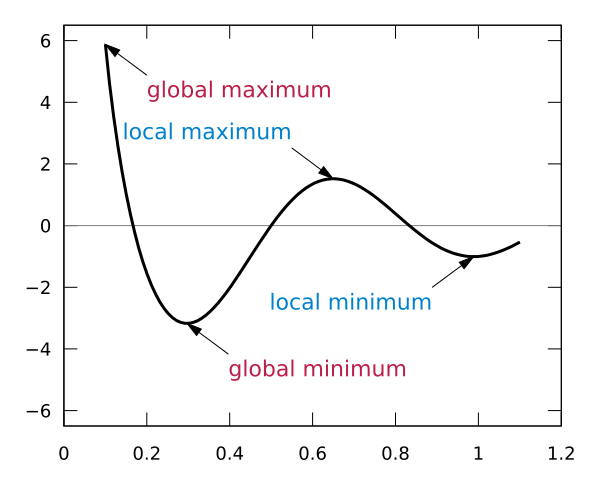ContainerCon 2015
Colin Walters, Platform Engineering, Red Hat, Inc.
keybase.io/walters | walters@{redhat.com,verbum.org}
My Background
- Before Red Hat: Emacs, Rhythmbox, Debian, SELinux
- Red Hat: Fedora, Red Hat Enterprise Linux, DBus, GNOME (glib/introspection/gjs), systemd, polkit, NetworkManager, OSTree, rpm-ostree...
- Project Atomic
Before Docker: RPMs/debs: A local maximum

Effort to be useful and different is high
rpm/dpkg etc. all evolve to similar point
Before Docker: Build -> Deliver -> Manage
Problem domains tied together
Continuous Delivery is very different from CI
Management tools (Puppet/Ansible/OpenSCAP/CloudForms/System Center) are important
Before Docker: Distributions and cadence
Common pattern: Take base distro as frozen set with security updates, move slowly on it, iterate on application
Distribution model not great at 3rd party app support (ABI guarantees etc.)
Before Docker: OpenShift v2
PaaS (on premise, online) primarily focused on "web app" languages (Java/dynlangs)
pid namespace, but not mount namespace
nginx cartrige not ergonomic
Why Docker
- Containers are not new, and yes you still want to use virtualization
Dockerfilemakes diving into containers really easy: Mash together rpm/dpkg + pip/cargo/rubygems/godeps + config files- Layering model easy to understand
- Major investment: RBAC, Storage, Kerberos, Networking
Post Docker: Project Atomic
- Atomic Host: Docker + Kubernetes + rpm-ostree + kernel(LVM,SELinux,...) + systemd
- Atomic Host: Not a distribution, an upstream for technology that goes into Fedora/CentOS and enterprise
- Maintaining Docker base image
/usr/bin/atomic: A new command line tool for super-privileged containers- atomic-reactor: Layered Docker build system
- nulecule: Multi-container app abstraction
Post Docker: OpenShift v3
- Kubernetes + PaaS
- S2I lighttpd:
RUN yum install -y lighttpd ...
Project Atomic Timeline: 2013-2014
- 2013-01-18: First docker commit
- 2013-12-24: Scott Collier’s Fedora-Dockerfiles (xmas eve??)
- 2014-04-15: Project Atomic announcement: Initial focus on docker, atomic host updates via rpm-ostree
- 2014-08-14: OpenShift v3 based on Kubernetes
- 2014-10-10: Fedora Atomic: s/geard/kubernetes/
Project Atomic Timeline: 2015
- 2015-01-14:
/usr/bin/atomic(super-privileged containers) - 2015-03-05: Red Hat Enterprise Linux Atomic Host
- 2015-05-26: Fedora 22 (with Atomic Host)
- 2015-06-24: OpenShift Enterprise v3
- 2015-07-03: atomic-reactor build system: More robust/controlled Docker image builds
Docker/distro: Packages will continue to exist (but should evolve)
- Inventory: What version of OpenSSL is in this image?
- Share content between different images (libc, ca-certificates)
- Source -> artifact tracking/binding (GPL compliance, rebuild)
- Traditional deployment will continue for a long time
Docker/distro: Future: One layer base, vs app-only containers
- Deep layering not really valuable assuming inventory-aware updates
- Streamlined containers: app+dependencies
- One layer base: OpenShift v2,
FROM centos/debian:jessie, xdg-app, sandstorm.io, ...
Docker/distro: One SELinux policy, many apps
- Generic broad
svirt_lxc_net_ttype applies to all containers by default; MCS and kernel namespaces add separation - Running apache in Docker no longer has
httpd_t - In my opinion, having coarse but always on policy is good
- Should better support controlling information flow on mounted volumes in Kubernetes
- Labeled networking? /OVS
Docker/distro: systemd
- Unit files are nice
- Start on boot: service state better solved in distributed fashion by kubernetes
- runc/libcontainer from unit file
- "virt-lite" (systemd-in-docker) should be supported
- systemd-nspawn oriented towards stateful virt-lite
- journal is nice, and Docker logging has been slow to evolve
Docker/distro: systemd vs microservices
- An important end state is "thin" immutable state-stored-elsewhere containers
- Container with just nginx: Package includes unit file (and systemd dep)
- Add support to kernel pid namespaces to handle “pid 1 duty” like auto-reap zombies etc.
- Parse unit files and generate Dockerfile fragments? Seccomp rules, etc.
Docker/distro: Distro value
- https://fedoraproject.org/wiki/Changes/CryptoPolicy example of distro value
- Know that no software is willing to speak SSLv3
- Official Docker Hub nginx container is
FROM debian:jessie - Want to control ca-certificates, but
/etc/ssl(Debian) vs/etc/pki(Fedora) - shared-mime-info
Docker/distro: Image maintenance
- Base images from distro to Hub: Painful, no provenance/signing support
- "Maintainer": bugzilla, cadence
- Content policy (Fedora: FOSS)
Docker/distro: Fedora layered images
- Work ongoing to deploy atomic-reactor in Fedora for layered images
- "tools" image and containerized Cockpit UI for Fedora 22 blocked on this
- Ongoing discussion on registry
Docker/distro: Release engineering
- Hard and generally thankless problem domain
- Not many people, lots of different technology
- Do not underestimate the cost of new delivery types
- Example: Fedora mirrormanager/metalinks and local mirrors
Docker/distro: Cost of two ways to do it
- Maintaining containerized and non-containerized deployment simultaneously is hard
- Fedora.next/Rings: Fedora.next
- Fedora Atomic under Cloud, with mainline image
- Keep
httpd_t?
Atomic Host
- Tuned devicemapper partitioning for Docker (or overlayfs)
- rpm-ostree with docker+kube+flannel
- A/B type update scheme with minimal package set
/usris mounted read-only always- Writable
/etc- Ansible works
Atomic Host: Software on the edges
- Added both screen and tmux
- Parts of Cockpit included in base tree
- Networking: IPSec
- iSCSI in host, but not LUKS (currently)
- oVirt
- 3rd party kernel modules, PAM modules...
Atomic Host: SPCs
- atomic install
- CoreOS:
early-docker.service - rpm-ostree: package layering
Future w/OpenShift
- Sharing more code (focus on Kubernetes)
- Project Atomic has upstream kube, Origin has a lot of patches
- Shared installer (Ansible/cloud-init), Vagrant boxes, etc.
Future tooling wishlist
- Better package system support for microservice containers (no yum in container, no rpm, just rpmdb)
- Non-root package systems (prior art exists)
- More sophisticated pkg <-> image tooling (rpm-ostree, vs Dockerfile/deb2aci)
- Ansible like layer for sophisticated application config
Future security wishlist
- Strong seccomp rules always on (sandstorm.io), perf, network syscalls
- Enforced code signing (notary vs `rkt trust` vs package systems)
- Kubernetes
MustRunAsNonRootvs signing and vs setuid binaries - OSTree-like storage backend (build containers with rofiles)
- User namespaces exposed to uid
!=0is scary